In the world of photography, a handful of famous landscape photographers stand out above the rest. Ansel Adams, Michael Kenna, and Sebastião Salgado are a few of the most recognized names in the genre. These photographers have captured some of the most breathtaking images of nature. This article will look at some of their most famous photos and see what makes them so unique.
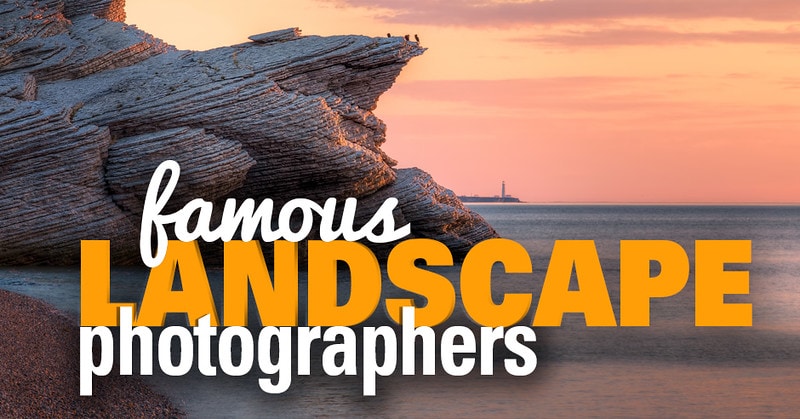
Famous Landscape Photographers You Should Know
Landscape photography is, without a doubt, one of the most (if not the most) famous members of the disciplined family of Straight Photography.
1. Ansel Adams (1902-1984)
Known as the Supreme Master of Landscape Photography, Ansel Adams is by far the most important name among famous landscape photographers.

Ansel Adams was an American photographer and environmentalist whose prints are the perfect evidence that the work that happens after pressing the shutter button is extremely important. As a whole, his images depict a pure fascination with nature, as his landscape photographs of the American West—especially Yosemite National Park—are his most iconic body of work.
Anytime someone hears the phrase “Landscape Photography,” it’s no surprise that Adams is likely the first to come to mind since his passion for landscape photography transformed his skills into stunning mastery.
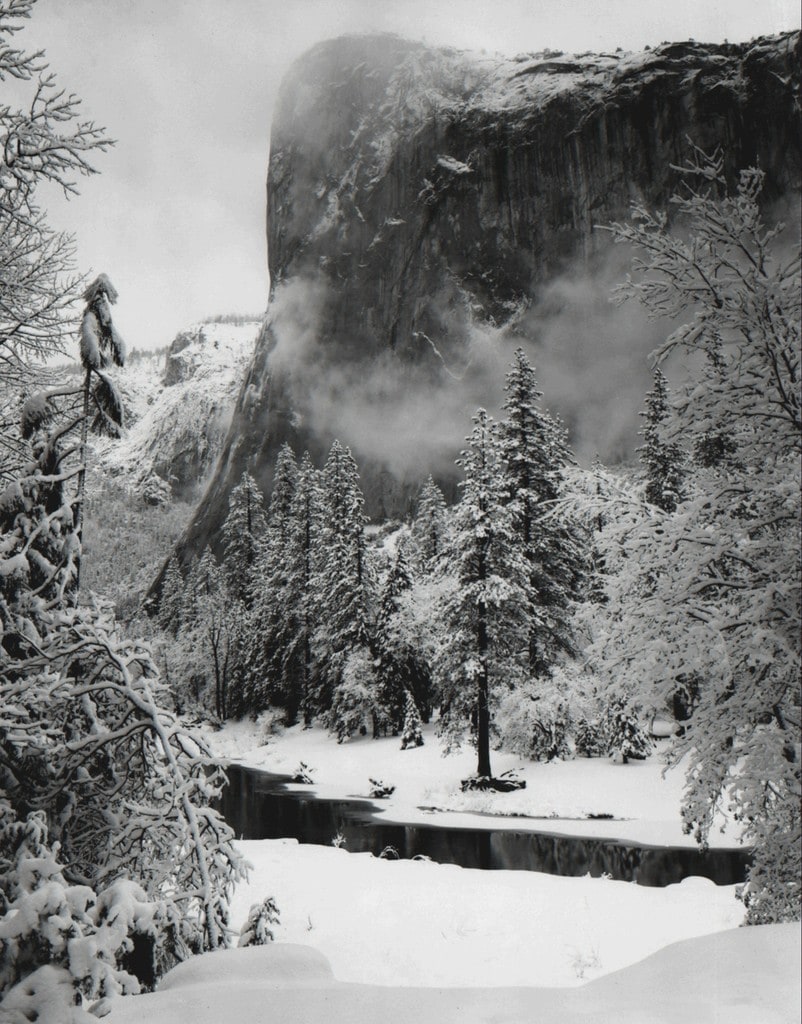
Besides popularizing Landscape Photography, he gave the world a great tool for getting the best tones for each portion of a photograph in print, which is the summit of every photographer’s workflow. This priceless gift is called the Zone System, which Adams developed alongside Fred Archer. Basically, the Zone System refers to the amount of light a specific portion of the negative needs to imprint the best tones onto paper.
Ted Forbes created a great video that seamlessly and effectively explains the technique.
Adams primarily used large format cameras, also known as a view or field cameras. He used these particular cameras because of their ability to ensure extremely high resolution and sharpness when rendering images.
The large format starts at 4″ x 5″. To get an idea of the amount of information that this format is capable of capturing, you can fit 15 35mm negatives inside a 4″ x 5″ negative (the smallest of large format).

Inside an 8″ x 10″ (another standard of large format), you get the same amount of information with 60 35mm negatives.
In addition to his work on the Zone System, Adams also founded the photography group known as Group f/64 along with fellow photographers Willard Van Dyke and Edward Weston. The group is much like Magnum Photo but for Straight Photography.
He also created three magnificent books that are considered the bibles of photography—The Camera, The Negative, and The Print. These three very dense and technical books, including the Zone System, cover the entire photographic workflow.
In The Camera, Adams discussed everything from visualization to special purpose equipment and techniques. In The Negative, he covered a wide range of topics from image values to value control in processing and emphasized the importance of darkroom processes, equipment, and procedures. And in The Print, he discussed expressive image and special printing applications.

Among numerous other published works, Adams’ photographs can also be enjoyed virtually here. If you ever have the chance to see his prints in person, I encourage you to do so. You’ll be blown away by his work and will better understand how deeply passionate he was about getting the best tones in his images during printing.
Ansel Adams Books
2. Michael Kenna (1953- )
Michael Kenna is a renowned landscape photographer from Britain known for his distinctive style and ethereal, black and white landscape images. His work often evokes a sense of quiet and contemplation, capturing the essence and serenity of the natural world.
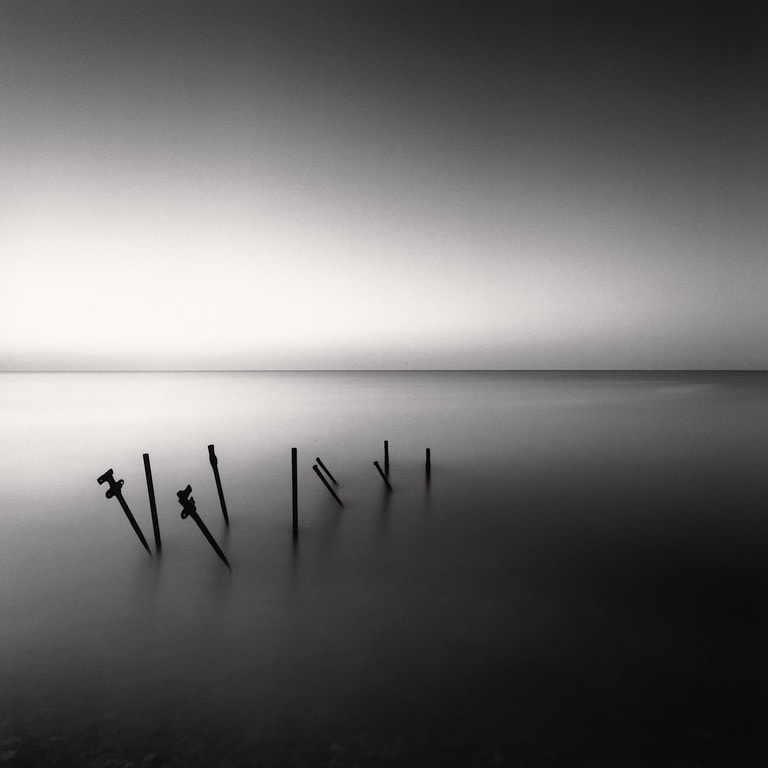
Style and Technique: Kenna’s style is characterized by its minimalism and simplicity. He primarily works in black and white, which allows him to focus on the essential elements of a scene, such as light, shadow, and form. His images often feature long exposures, resulting in a dreamlike quality that blurs the line between photography and fine art. Kenna’s compositions are carefully thought out, emphasizing elements like water, mountains, trees, and man-made structures. He pays close attention to the interplay between light and darkness, creating a sense of timelessness in his work.
Kenna’s long exposure technique allows him to capture the passage of time in a single frame. Moving water becomes smooth and ghostly, clouds streak across the sky, and any moving objects, like people or animals, often disappear, leaving only the enduring elements of the landscape.
Transition to Landscape Photography: Kenna’s journey to becoming a celebrated landscape photographer is interesting. He originally worked in commercial photography, where he honed his technical skills. However, he found commercial work unfulfilling and yearned for a deeper connection to his subjects. This led him to transition to landscape photography, where he discovered his true passion for the natural world.
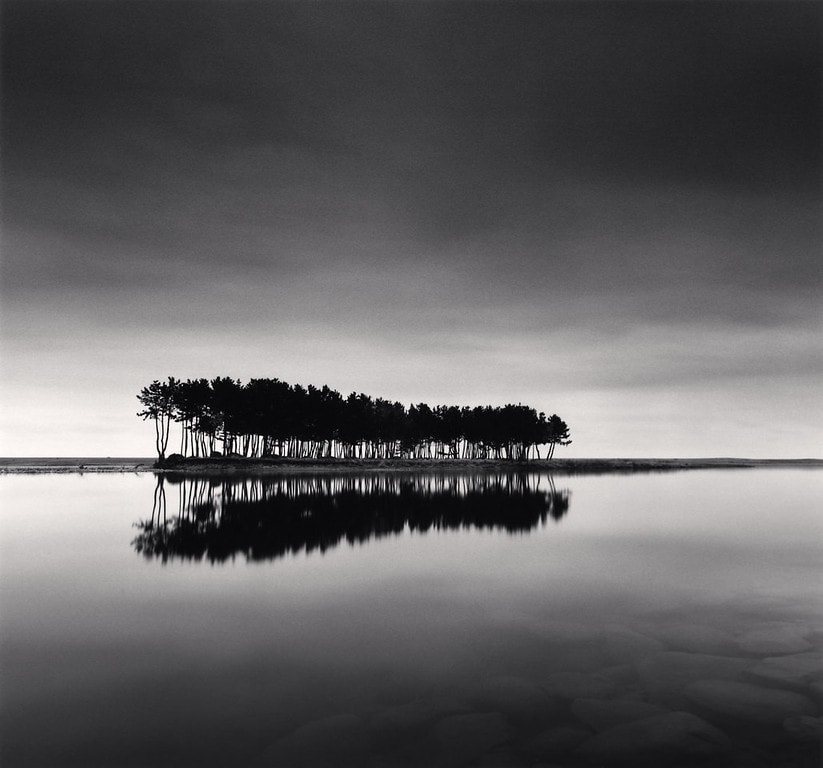
His transition from commercial work to landscape photography allowed him to fully embrace his artistic vision and explore the spiritual and emotional aspects of photography. This shift marked a significant turning point in his career, leading to the creation of his distinctive body of work.
Philosophy: Kenna’s philosophy as a photographer centers around the idea of capturing the essence of a place or scene rather than merely documenting it. He seeks to evoke emotions and convey a sense of the sacred within the natural world. He often visits locations repeatedly to build a deeper connection and to wait for the perfect light and atmosphere to create his images.
Kenna’s work reflects his deep respect for the environment and his belief in the importance of preserving it. His photographs are a testament to the enduring beauty of nature and the need to appreciate and protect it.
Delight yourself by visiting his website to see more of his incredible talent.
Michael Kenna Books
3. Nadav Kander (1961- )
Nadav Kander is a renowned photographer from Israel, known for his diverse body of work, including landscape photography. His style is characterized by a subtle and contemplative approach that often conveys a sense of quiet and introspection.

Emotional Depth: Kander’s work is known for its emotional depth. His photographs capture not just the physical beauty of the landscape but also the hidden emotions and narratives within it. He uses light, shadow, and composition to create images that resonate with viewers on an emotional level.
Subdued Color Palettes: Kander often uses muted and subdued color palettes to create a sense of serenity and timelessness in his images. This contributes to the overall mood and atmosphere of his work.
Long Exposure: Like Michael Kenna, Kander occasionally employs long exposure techniques in his landscape photography. This allows him to capture the passage of time, the movement of water, and the shifting of clouds, resulting in dreamlike and ethereal qualities in his images.
Kander’s philosophy as a photographer revolves around capturing the complex and multifaceted nature of the world. His work often delves into the human condition, even in the context of landscapes. He seeks to convey the interconnectedness between people and their environments. His landscapes are not merely scenes but are infused with the essence of human experience, memory, and emotion.

One of Nadav Kander’s significant series is “Dust,” a collection of photographs that explores the hidden traces of the Cold War in the landscapes surrounding the Aral Sea, which was once one of the four largest lakes globally but has since significantly receded due to extensive water diversion projects. “Dust” captures the eerie and desolate landscapes that bear the scars of this environmental catastrophe. Kander’s photographs convey the environmental devastation and the impact of human activities on the natural world.
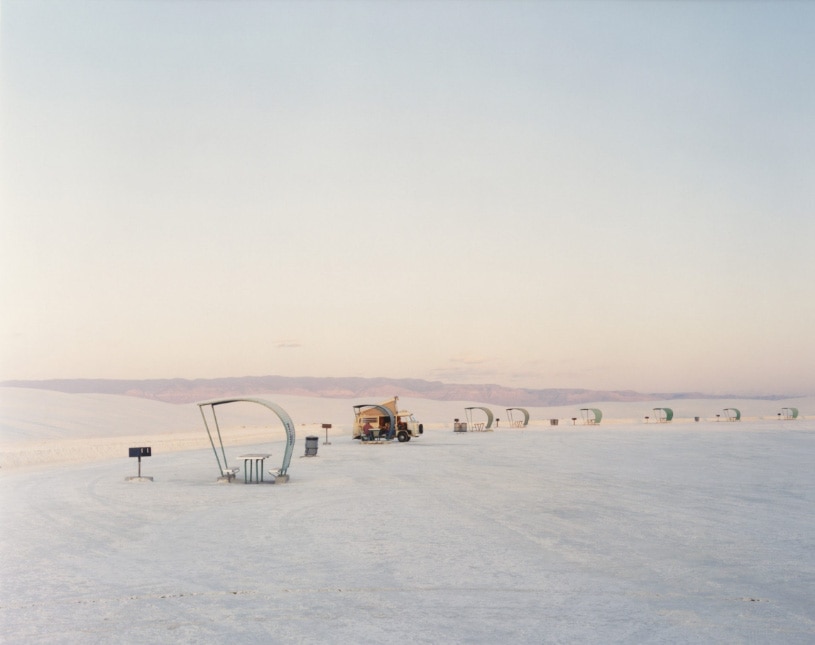
But my favorite Nadav Kander’s series is “God’s Country.”
Nadav Kander’s “God’s Country” series is a compelling body of work that delves into the complex and multifaceted landscapes of the United States. Through this series, Kander explores the American landscape, its people, and the broader social and political themes that shape the nation. “God’s Country” is characterized by Kander’s distinctive photographic style, emphasizing subtlety and emotional depth.
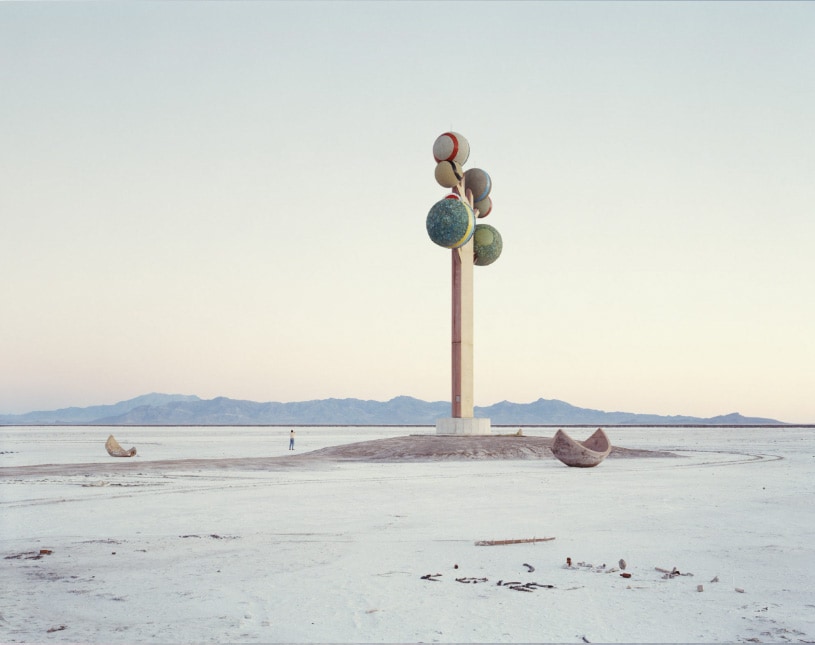
Nadav Kander Books
4. Sebastião Salgado (1944- )
Sebastião Salgado is a Brazilian photographer renowned for his impactful and socially conscious landscape and documentary work. His unique style, technique, and life experiences have established him as a significant figure in the world of photography.

Salgado is distinguished by his extensive use of monochrome (black and white) photography. This choice imparts a timeless and emotive quality to his images, accentuating the raw emotions and human stories within his work.
His images are characterized by an incredible level of detail and depth. Through careful composition and adept use of light, he crafts photographs that captivate viewers, drawing them into the scenes and stories he captures, creating a profound sense of intimacy and connection.
Trained as an economist and earning a Master of Economics degree, Sebastião Salgado initially embarked on a different path, working as an economist for the International Coffee Organization (ICO). His frequent travels with the ICO, often to Africa on missions for the World Bank, led him to take up photography as a hobby. Over time, his passion for photography grew so profound that he abandoned his career as an economist in 1973 to become a full-time photographer.
Starting with news assignments, Salgado eventually gravitated toward documentary work. In 1979, he joined Magnum Photos, later leaving the group in 1994 to establish Amazonas Images in Paris with his wife, Lélia Wanick Salgado, to represent his work.
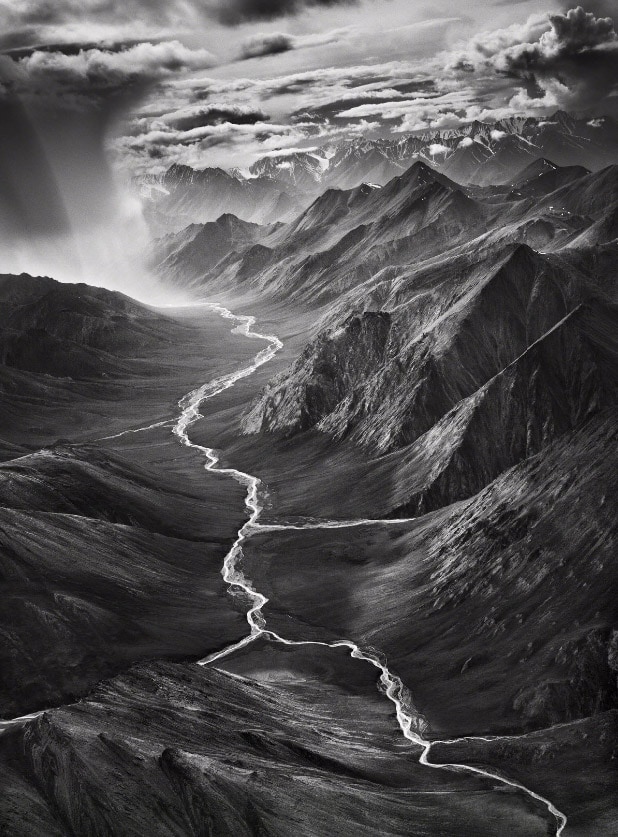
After extensively documenting human tragedies, he transitioned to nature and wildlife photography. His comprehensive body of work culminated in the publication of the remarkable book “Genesis” in collaboration with Taschen. He described his work in “Genesis” as a heartfelt homage to nature and an effort to give back to the environment. The book showcases some of the most exquisite landscape shots, distinguished by the remarkable print quality.
Salgado has served as a UNICEF Goodwill Ambassador since 2001. A captivating documentary “The Salt of the Earth” directed by Wim Wenders delves into the philosophy behind “Genesis” and the artistic synergy between Salgado and Taschen.
You can also watch this inspiring and revealing TED Talk to learn more. Check Sebastiao Salgado page on Artsy, which provides visitors with Salgado’s bio, over 200 of his works, exclusive articles, and up-to-date Salgado exhibition listings.
Sebastião Salgado Books
5. Brett Weston (1911-1993)
Brett Weston, an influential American landscape photographer, left a lasting legacy with his distinctive style, technique, and contributions to the field of photography.
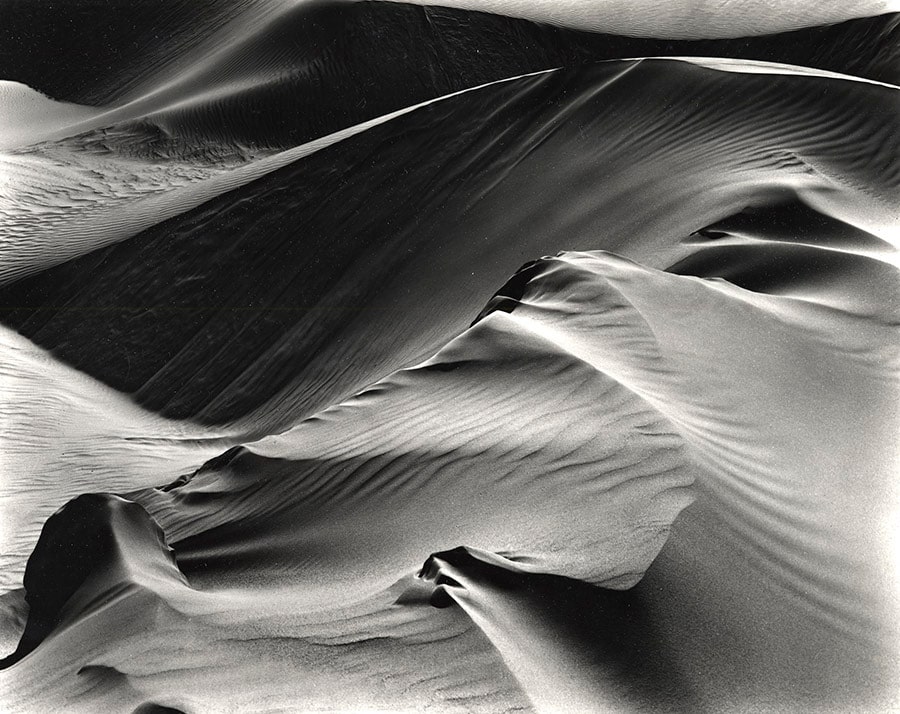
Weston was born into a family of photographers. His father, Edward Weston, was a prominent photographer, and Brett started assisting him at a young age. By the age of 14, he was already an accomplished photographer, showcasing his early talent and passion for the craft.
Abstraction and Minimalism: Weston was known for his unique approach to landscapes, often exploring abstraction and minimalism in his work. He stripped down his compositions to their most essential elements, focusing on form, texture, and tonal contrast.
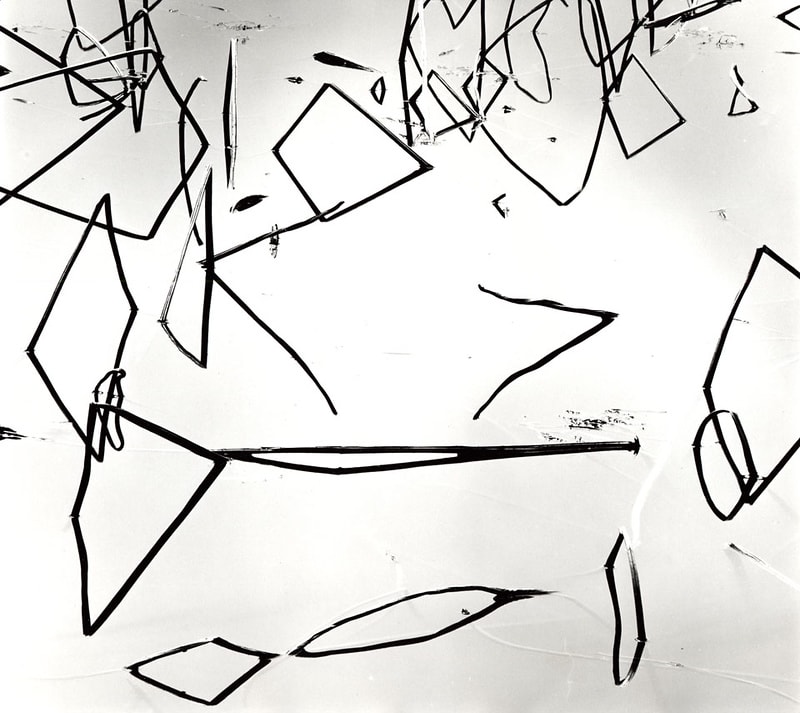
Sharp Focus and High Contrast: His photographs were characterized by their sharp focus and high contrast, which added depth and drama to his images. This style allowed him to capture the fine details and textures of his subjects with exceptional clarity.
Exploration of Nature: Brett Weston had a deep connection with the natural world. He often photographed the landscapes of the American West, the rugged coastlines, and the deserts. His work was a celebration of the beauty and grandeur of nature.
The most valuable thing we can learn from Weston is that landscapes can be captured with both wide and long lenses. Many of his images have a tight focal feeling which may sound like a contradiction, but seeing his work encourages us to think outside the box and uncage the prejudices and the standard rules of photography.
You can see more of his work online in the Brett Weston archive.
Brett Weston Books
6. Franco Fontana (1933- )
Franco Fontana is a renowned Italian landscape photographer celebrated for his distinctive style, technique, and his significant contributions to the field of photography.
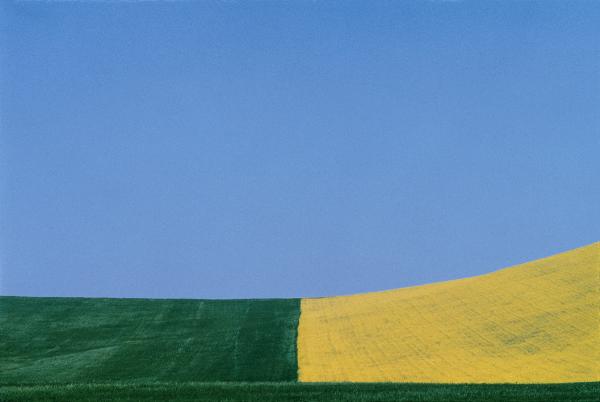
His early interest in art was deeply influenced by the works of Italian Renaissance painters. Drawing inspiration from the rich artistic traditions of his homeland, this influence is clearly evident in his approach to utilizing color and form in his photography.
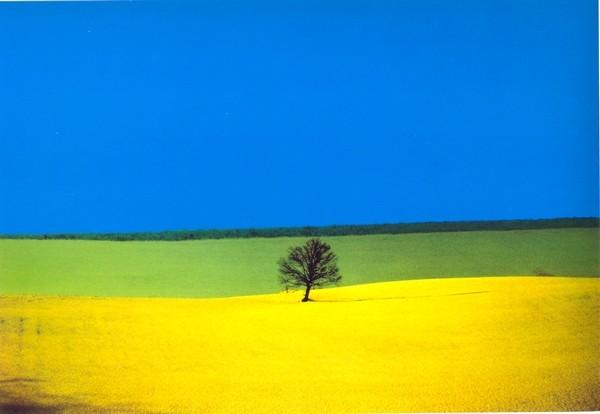
Distinctive Style and Technique:
- Vivid Colors and Abstraction: Fontana is widely recognized for his masterful use of vivid and saturated colors in his landscape photography. He has a remarkable ability to transform natural scenery into abstract compositions, placing a strong emphasis on color and form over conventional representations of landscapes. His work exudes a sense of painterly abstraction.
- Minimalism and Geometry: Many of Fontana’s photographs incorporate elements of minimalism and geometric shapes. He excels at simplifying complex landscapes to their essential components, resulting in visually impactful and harmonious compositions.
- Play of Light and Shadow: Fontana’s skillful and deliberate use of light and shadow adds depth and texture to his images. The interplay between light and shadow infuses his work with a dynamic quality, creating a sense of movement and rhythm within his compositions.

Fontana’s minimalist and abstract approach to landscapes offers valuable insights. Exploring tight focal lengths allows photographers to focus on smaller segments of the landscape, ultimately revealing the abstraction of the entire natural scene before their eyes.
One excellent method for honing one’s ability to perceive seamless abstractions in the world is through continuous contemplation of abstract paintings. Such exercises can enhance one’s appreciation for the art of abstraction and its applications in photography.

Official Franco Fontana’s website.
Franco Fontana Books
7. Takeshi Mizukoshi (1938- )
Takeshi Mizukoshi is a celebrated Japanese landscape photographer renowned for his distinctive style, technique, and significant contributions to the world of photography.
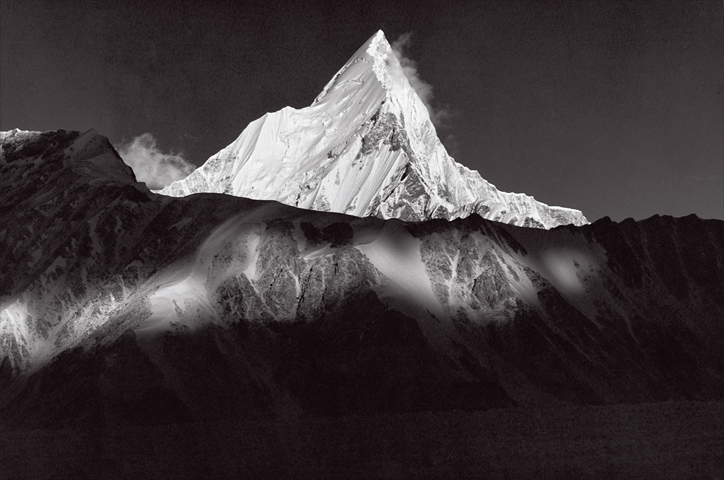
Mizukoshi embarked on his artistic journey as an architect, a background that has profoundly influenced his photographic compositions. His work often reflects a profound appreciation for geometric forms and spatial relationships within the landscape, offering a unique perspective.
Mizukoshi had the privilege of being mentored by the renowned landscape photographer Michael Kenna. This invaluable mentorship greatly impacted his approach to photography, enriching his understanding of the genre and further shaping his distinctive vision.
Although Mizukoshi’s body of work is somewhat challenging to find readily available on the internet, the limited pieces one can discover are a testament to his deep reverence for nature. His photographic works are prominently showcased in numerous domestic and international museums and art galleries, complementing his published works and offering a more comprehensive appreciation of his portfolio.
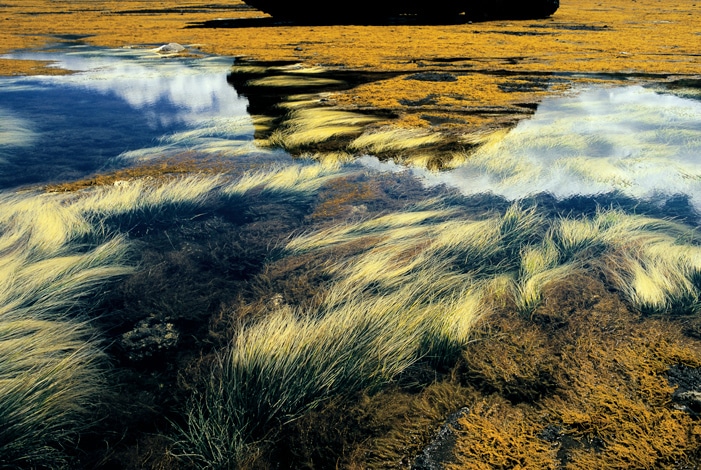
In essence, Mizukoshi’s photography conveys serene landscapes that remind viewers of their own smallness in the face of the vast and breathtaking beauty of nature. His images capture the essence of nature’s grandeur and offer a unique perspective on the world around us.
Fujifilm published a brief excerpt of Mizukoshi’s work here.
Takeshi Mizukoshi Books
8. David Brookover (1954- )
Much like Ansel Adams, David Brookover is skilled in capturing beauty and forming imagery through his lens before hand-crafting the image into an exceptional print, which is the true foundation of his art.
Brookover had the extraordinary opportunity to work as an apprentice with the iconic landscape photographer Ansel Adams. This invaluable experience profoundly influenced his understanding of photography and printing techniques, further shaping his artistic vision.

Black and White Mastery: Brookover is celebrated for his mastery of black and white landscape photography. He has a remarkable ability to transform natural scenery into stunning monochromatic compositions, emphasizing texture, contrast, and the interplay of light and shadow. His black and white images evoke a timeless quality that resonates with viewers.
Attention to Detail: Brookover’s work is characterized by a meticulous attention to detail. He excels at capturing the intricate patterns and textures found in nature, whether it be the delicate veining of leaves, the rugged texture of rock formations, or the fine nuances of water reflections. His photographs are a testament to his unwavering dedication to the craft.
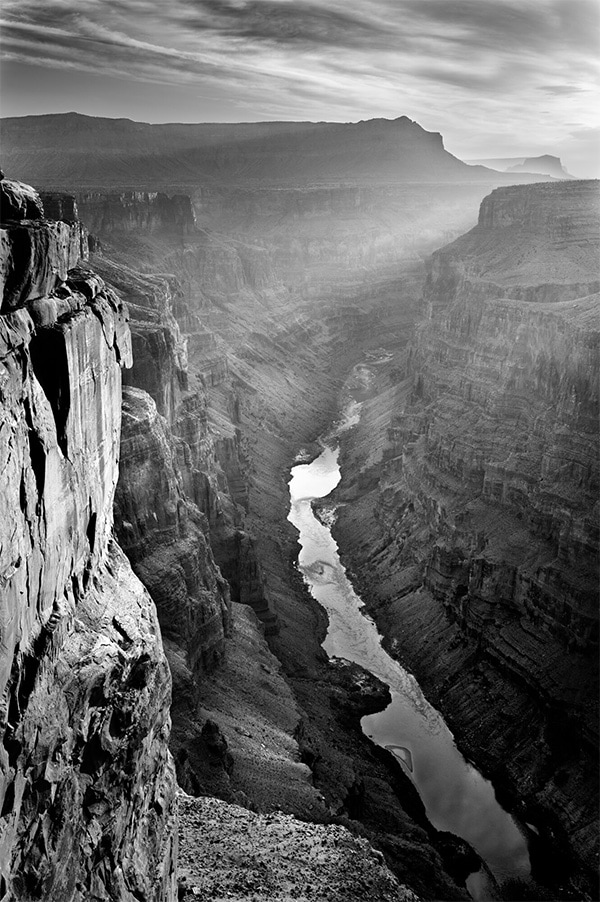
Alternative Printing Processes: In addition to his photography, Brookover is known for his expertise in alternative printing processes. He often employs techniques such as platinum-palladium printing and gelatin silver printing to create unique and exquisite prints. These processes contribute to the distinct and luxurious quality of his work.
In addition to his photographic endeavors, David Brookover is a respected gallery owner. He established the David Brookover Gallery in Jackson, Wyoming, which showcases not only his own work but also that of other talented photographers. The gallery has become a destination for art enthusiasts and collectors seeking exceptional landscape photography.
David Brookover’s monochrome gallery.
9. Galen Rowell (1940-2002)
A wilderness photographer, adventure photojournalist, and climber, Galen Rowell launched his career as a full-time photographer in 1972 despite being never formally trained.

Rowell was a self-taught photographer who developed his skills through a deep love for the outdoors and a natural curiosity for capturing the beauty he encountered. His journey in photography began with a Kodak camera, and he learned the craft through hands-on experience in the wilderness.
Vivid Color Photography: Rowell was celebrated for his use of vibrant and saturated colors in his landscape photography. He had a unique ability to capture the stunning beauty of the natural world in vivid and brilliant hues. His use of color added a sense of vibrancy and life to his images.
Light and Composition: Rowell’s work was characterized by his skillful use of light and composition. He had an innate talent for capturing the perfect moment when the interplay of natural light, shadows, and the environment created a visually striking image. His compositions often showcased the raw and untamed landscapes, emphasizing their grandeur and natural beauty.
Adventure Photography: In addition to landscape photography, Rowell was an adventure photographer. He combined his passion for climbing, mountaineering, and exploring remote locations with his photography. This unique approach allowed him to capture landscapes that were rarely seen and to convey the spirit of adventure and exploration in his images.
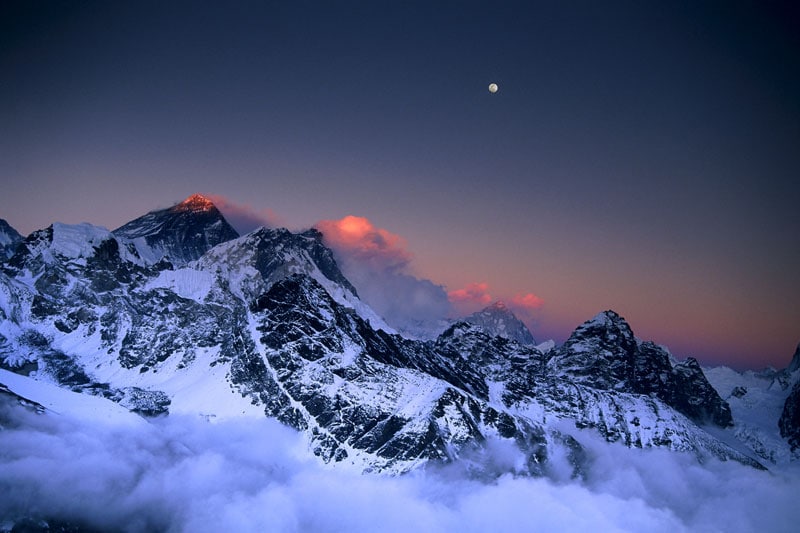
Galen Rowell was known for his pioneering work in night photography. He used long exposures to capture landscapes under the light of the moon and stars. His innovations in this field opened up new possibilities for capturing the world after dark and revealed the beauty of the night sky.
Filled with passion and patience for photography, Rainbow over the Potala Palace is exceptional evidence of his immeasurable talent.
Beyond his photography, Rowell was an environmentalist and writer. He used his platform to advocate for the preservation of wild places and the importance of conservation. His writings, including books and articles, often accompanied his photographs, providing context and stories behind his images.
Galen Rowell Books
10. Carr Clifton (1957- )
Carr Clifton is an American landscape, nature, and wilderness photographer who teaches us the importance of conservation and never grows complacent with the status quo, even when it comes to format. He has created a substantial body of work using a large format 4×5 film camera and, more recently, a digital camera, capturing images that epitomize the purest and most breathtaking forms of nature.

Clifton’s humility and enthusiasm have driven him to evolve over time. As an early adopter of photography in the early 1970s, his initial goal was to craft beautiful images of scenic places. Today, that same desire propels him deeper into the heart of the great outdoors.
Although National Parks have long been a favorite subject for photographers, Clifton firmly believes that beauty endures, and there is still much left to capture. In his view, even when a location has been extensively photographed, there are always new perspectives to be found through the lens because landscapes are constantly changing and revealing new facets of themselves.
Carr Clifton is based in the American West, particularly in California. His proximity to the diverse and breathtaking landscapes of the western United States has allowed him to capture a wide range of environments, from the deserts of the Southwest to the lush forests of the Pacific Northwest.

With his philosophy, he encourages us to consider the importance of exploring our local surroundings and reminds us not to take any place, no matter how familiar, for granted.
Carr Clifton’s official website.
Carr Clifton Books
Famous Landscape Photographers | Conclusion
In conclusion, these famous landscape photographers and their photos have shown us the beauty of nature through their unique perspectives. They have also inspired us to explore the world and capture its wonders through our cameras.
Until next time, keep exploring and capture your own awesome landscapes!


